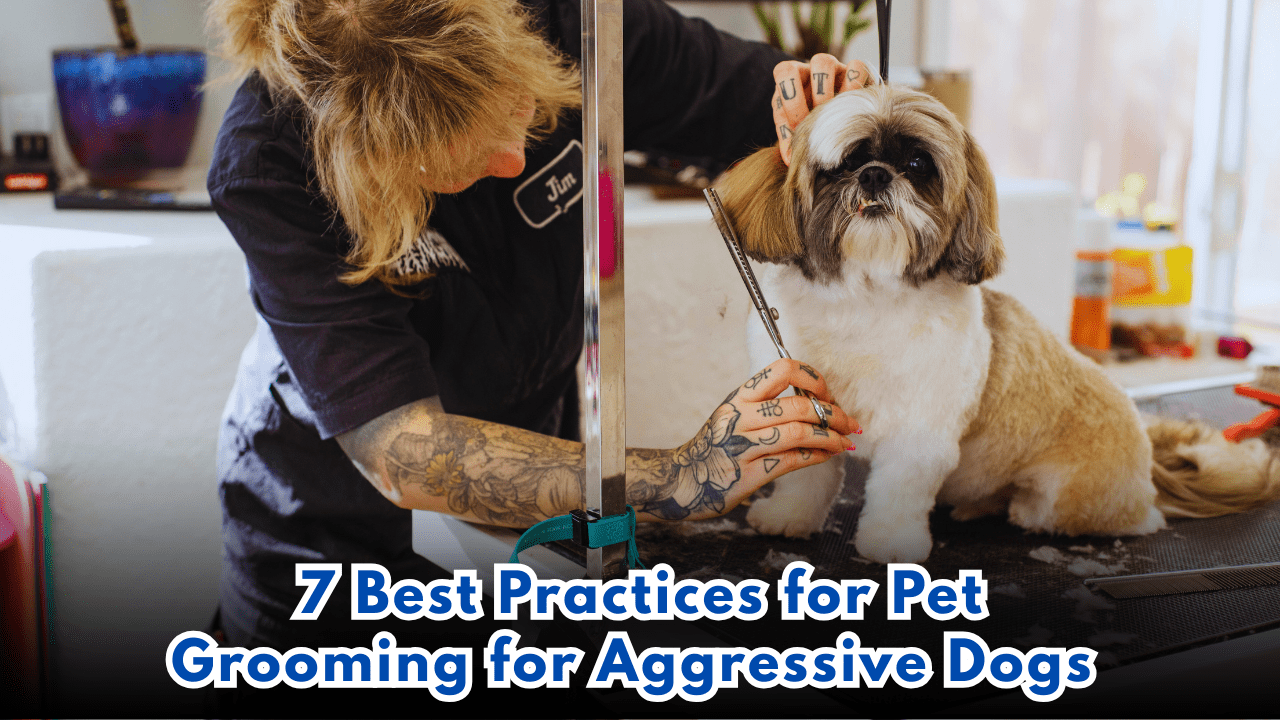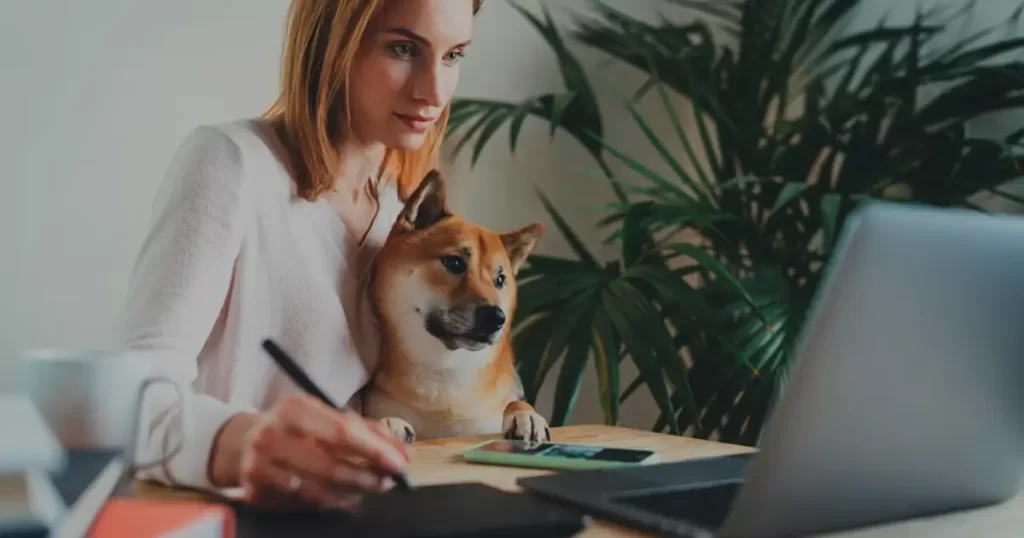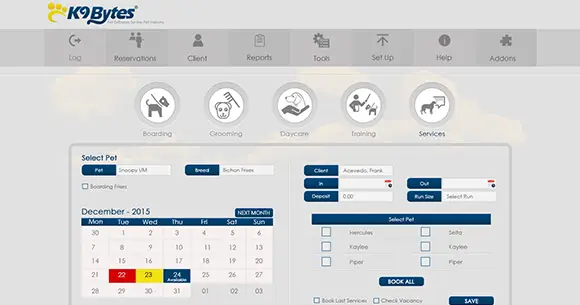Grooming is more than just keeping dogs looking good. It’s a necessary part of their health and comfort. But when a dog becomes aggressive during grooming, it becomes a real challenge, especially for pet business owners who want to provide top-quality service without risking injury to themselves or the dog. Biting, barking, growling, and panicking are common among dogs that feel threatened by grooming tools or the environment. That’s why this article lays out the seven best practices for pet grooming for aggressive dogs, as well as practical steps you can follow to make the process safer and smoother. If you work in the pet care industry in the USA, this guide is for you.
Understanding Aggression in Dogs During Grooming
Aggressive behavior during grooming often stems from fear, past trauma, or lack of socialization. A dog may lash out because it’s scared of the tools, anxious around strangers, or simply uncomfortable with being touched in sensitive areas like the paws, ears, or tail. While understanding a dog’s behavior is the first step, managing that behavior in a busy grooming business can be overwhelming. That’s where Pet Grooming Scheduling Software can be a game changer.
Software designed for pet grooming businesses allows you to take detailed notes on each dog’s behavior, track which tools and techniques work best, and even schedule appointments at quieter times for aggressive dogs. It can also store information on which groomers a dog responds to well, what calming techniques were used successfully, and any past incidents, all accessible in just a few clicks. This data helps you and your team plan for each session, communicate better with pet parents, and apply all seven best practices you’ll read below with more confidence and structure.
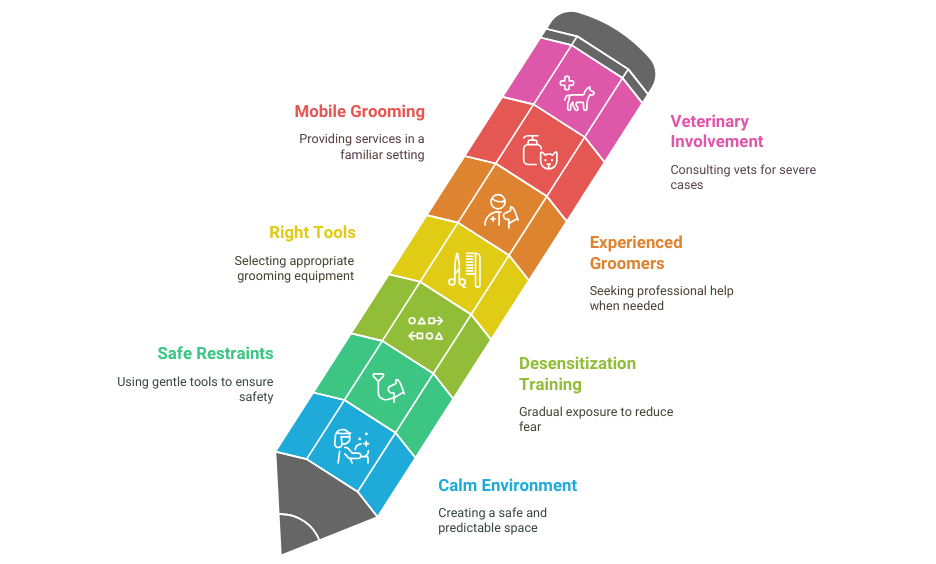
Practice 1: Create a Calm and Predictable Environment
Creating a calm and predictable environment reduces a dog’s aggression. Aggressive dogs tend to react to loud sounds, sudden movements, or unfamiliar settings, so it helps to groom them in a quiet space with gentle lighting and minimal distractions. Whether you operate in a salon or a mobile setup, making the environment feel safe helps dogs feel less threatened. A slow and steady approach and familiar routines can put the dog at ease and make grooming feel more predictable rather than scary. It is essential when offering mobile dog grooming for aggressive dogs, where the home setting already reduces anxiety.
Practice 2: Use Safe and Gentle Restraints
Using safe and gentle restraints is another practice that can make a huge difference. Not all dogs will stay still, especially when scared, so light restraints like grooming loops or soft muzzles can help keep the dog safe without causing discomfort. Knowing how to restrain an aggressive dog for grooming properly means avoiding force and instead using the right tools with patience. Comfort-focused restraint tools can keep the session under control without making the dog feel trapped or more afraid.
Practice 3: Apply Desensitization Training
Desensitization training can turn the grooming process into something the dog tolerates or enjoys over time. Some dogs aren’t aggressive because they want to be. They just haven’t had enough positive experiences with grooming. Gradual exposure to grooming tools, paired with praise and treats, can reduce fear. As you repeat short sessions and reward calm behavior, dogs feel less threatened. This method of grooming for aggressive dogs takes commitment, but it’s one of the safest long-term solutions for business owners handling repeat clients.
Practice 4: Use the Right Grooming Tools
Using the right Dog grooming tools is more important than most people realize. Loud clippers, uncomfortable brushes, or slippery grooming tables can trigger negative reactions in dogs already on edge. When grooming aggressive dogs, high-quality, low-noise equipment that works quickly and comfortably can reduce grooming time and prevent unnecessary stress. Shorter, smoother sessions mean fewer chances for the dog to become agitated or lash out.
Practice 5: Rely on Experienced Groomers When Needed
Sometimes, the safest thing you can do is bring in or refer to a dog groomer for aggressive dogs with more experience. You don’t have to take on every dog as a pet business owner. Some groomers are explicitly trained in behavior handling and are better equipped to manage intense cases. If your team includes one of these professionals, ensure they’re available for clients who need it. If not, building a referral relationship with one can protect your business while helping pets get the care they need.
Practice 6: Offer Mobile Grooming Services
Offering mobile dog grooming for aggressive dogs is a great option to reduce fear and aggression in clients who don’t respond well to busy grooming salons. Mobile grooming creates a familiar, low-stress environment outside the pet owner’s home. It also allows one-on-one attention without the noise or smell of other animals. Many pet owners of anxious or aggressive dogs prefer mobile grooming, and its convenience can be a huge selling point for your business.
Practice 7: Know When to Involve a Veterinarian
There are cases where a dog is too aggressive for grooming without veterinary help. In these situations, it’s best to involve a licensed vet who can provide mild sedation and monitor the dog’s response. If your grooming business has connections with local veterinarians, this collaboration can be life-changing for pets and their owners. Grooming under sedation should always be a last resort, but it’s sometimes necessary to prevent injury and ensure the dog stays clean and healthy.
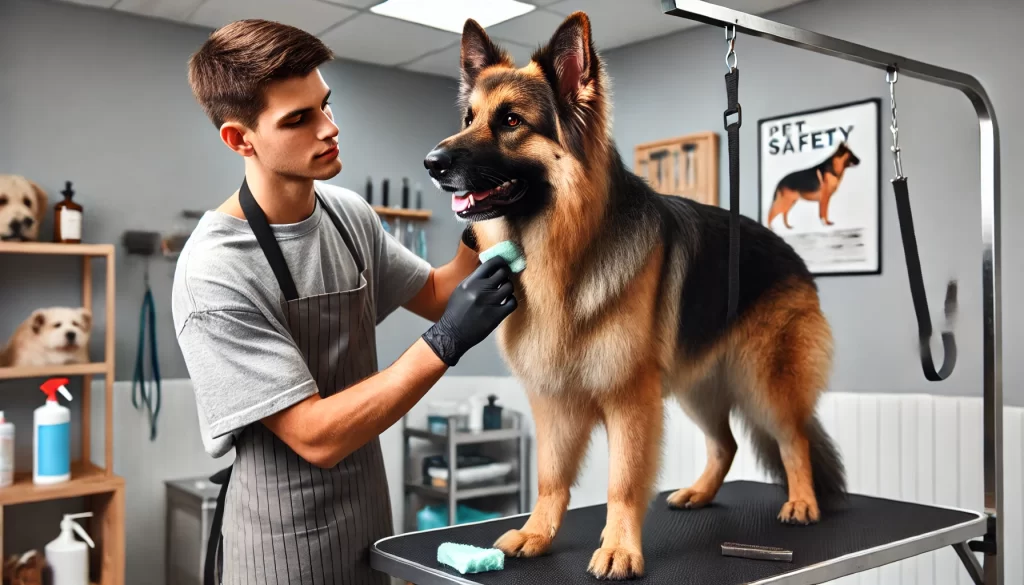
How to Find a Groomer for Aggressive Dogs
If your business can’t safely groom a particular dog, help your client by guiding them toward someone who can. Knowing how to find a groomer for aggressive dogs means looking for someone with experience in behavior-focused grooming, a calm approach, and possibly even training in animal behavior. A good match will improve the grooming experience for the dog and show your clients that you care about their pet’s well-being beyond profit. Referring out when needed builds your reputation as a responsible and professional grooming service provider.
Final Thoughts
Working in pet grooming for aggressive dogs is never easy, but it’s one of the most rewarding parts of running a pet business. You’ve done more than just clean fur or trim nails when you can take a scared or reactive dog and help it feel safe. You have made a difference in that dog’s life. These seven best practices offer real, workable solutions to reduce stress, build trust, and protect your team from harm. With the right tools, a patient mindset, and innovative grooming software, you can deliver safer and more successful sessions, even for dogs with behavior challenges. Ultimately, safety, understanding, and preparation set top pet grooming businesses apart in the USA today.

